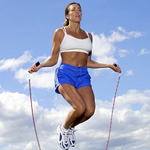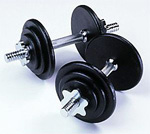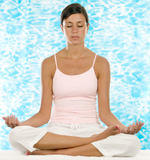 Research published in March in the ACSM Medicine and Science in Sports and Exercise Journal, confirms the most effective treatment for those with osteoarthritis in the knee should include improving total function for the entire lower body, not just the affected knee. It is projected that by 2020, nearly 57% of the adult population may have this disease. Osteoarthritis not only causes pain and joint limitations, but increases the risk for falling as well.
Research published in March in the ACSM Medicine and Science in Sports and Exercise Journal, confirms the most effective treatment for those with osteoarthritis in the knee should include improving total function for the entire lower body, not just the affected knee. It is projected that by 2020, nearly 57% of the adult population may have this disease. Osteoarthritis not only causes pain and joint limitations, but increases the risk for falling as well.
The study examined movement patterns specific to climbing and descending stairs of those with knee osteoarthritis. Researchers found compensation patterns involving the hip and the ankle, in addition to the knee itself. They concluded an exercise program for those with knee osteoarthritis should include range of motion, balance and strength exercises for the hip, knee and ankle. Here are a few ideas to get started:
Standing straight leg forward and backward hip range of motion. Stand on your right leg. Keep your left knee straight and move your left leg about six inches forward and six inches behind you. Perform 5-8 times. Repeat standing on your left leg; move your right leg forward and back 5-8 times.
One leg hold for balance. Hold on to a stable object. Stand on your right leg only for 10 seconds. Repeat by standing on your left leg only for 10 seconds.
Standing heel raises for strength.Stand with your feet hip-width apart and hold on to a stable object for safety. Lift both heels about 2 inches off the ground, and then slowly lower only about an inch. Perform 10 times.
Ankle range of motion.Stand on your right leg. Extend your left leg forward about six inches with your knee straight, circle your ankle 5 times to the right and 5 times to the left. Repeat standing on your left leg; extend your right leg forward and circle your right ankle 5 times to the right and 5 times to the left.
Nicole Clancy has been a freelance writer and certified fitness professional since 1990. She’s contributed to Body and Soul, SELF, Redbook, Prevention, Her Sports, Good Housekeeping, Girls Life, Triathlete Magazine, Santa Barbara Magazine and Woman Magazine, as well as various health/fitness trade publications. Her articles have been internationally syndicated in Vogue, Glamour and Easy Living.
 Subscribe
Subscribe




